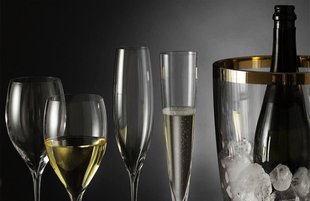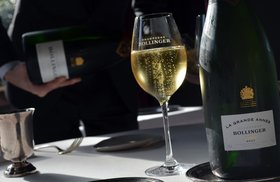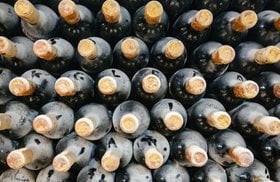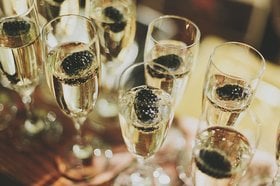Best Champagne Glasses (Styles, Best Wines 2025)
Your exquisite bubbly wines need to be served in the best Champagne glasses, right?
Champagne might evoke the image of glittering wine in a tall, elegant flute. However, a flute isn’t the only type of glass for your fine bottle of sparkling wine. It might not even be the best for its use!
Surprised?
In this article, we’ll cover the different Champagne glasses, when to use them, tips on selecting them, and a suggestion of fine sparkling wines to fill your glass!
Further reading
- Explore the most Luxurious Red Wines and equally Exquisite White Wines from around the world.
Anatomy of Champagne Glasses
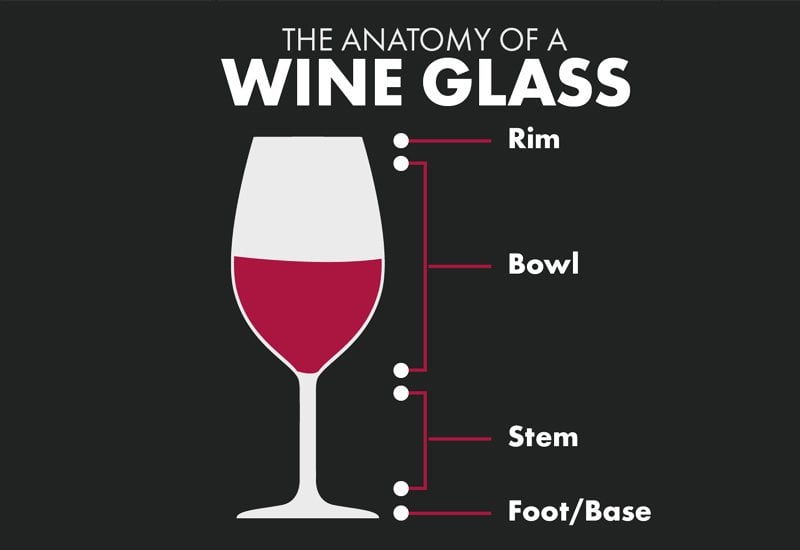
You may think that any tall wine glass can work as a Champagne glass — after all, you just need to drink from it.
However, each type of sparkling wine may demand a different glass to bring out its flavors and aromas.
The function of a Champagne glass
What sets Champagne and sparkling wine apart from other wines is its bubbles - thanks to the natural process of carbonation.
So, the shape and size of a good Champagne glass should preserve these attractive bubbles.
The ideal Champagne glasses have a “nucleation site” at the base of the bowl. This is a tiny laser-engraved etching that helps the bubbles form. Having a targeted effervescence point helps the bubbles stay longer and float up beautifully in vertical lines.
Materials used for Champagne glasses
Here’s a look at common drinkware materials used for Champagne.
- Soda-lime glass: This is the standard glass type used most for Champagnes. Non-porous and inert, it won’t absorb chemical aromas and is always dishwasher safe.
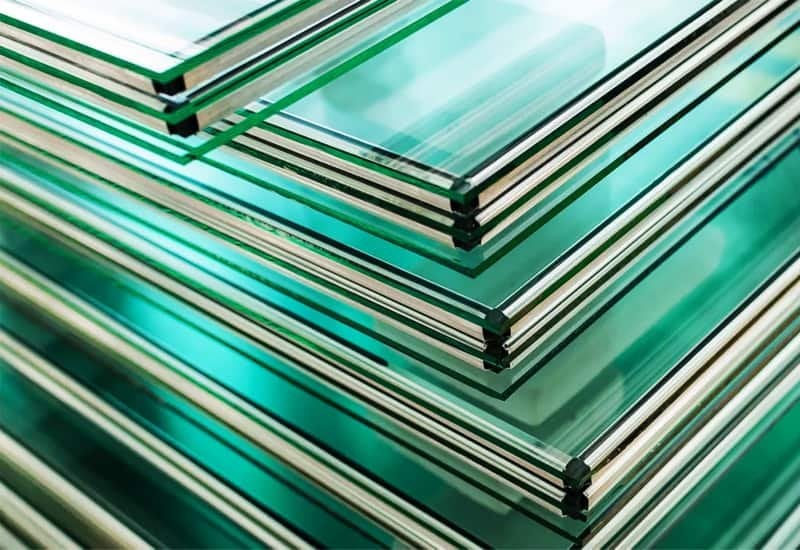
- Crystal: Crystal has added minerals, allowing it to be spun much thinner than standard glass but still retain structural strength. This material refracts light well, making the wine sparkle.
You’ll find leaded and lead-free versions of crystal. However, the addition of minerals makes it porous, so it’s not always dishwasher safe.
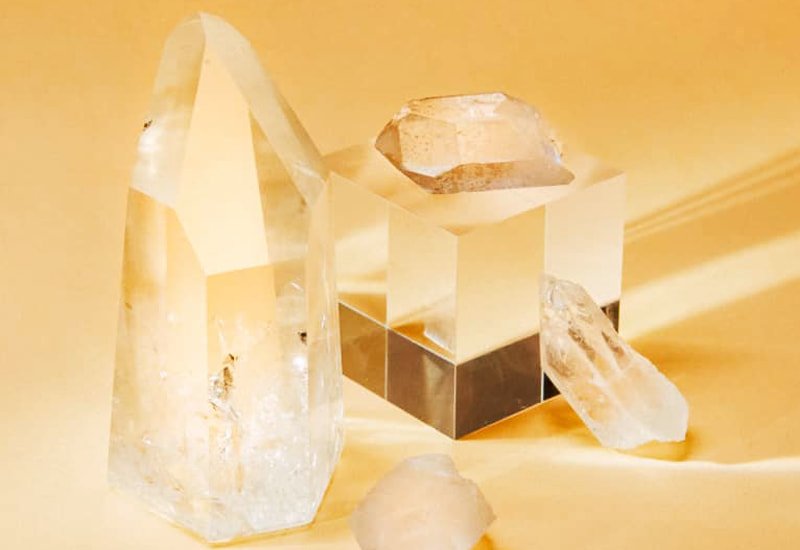
- Alternate materials: Other materials used to make Champagne glasses include acrylic, plastic, and steel. These are usually shatterproof and may be disposable.
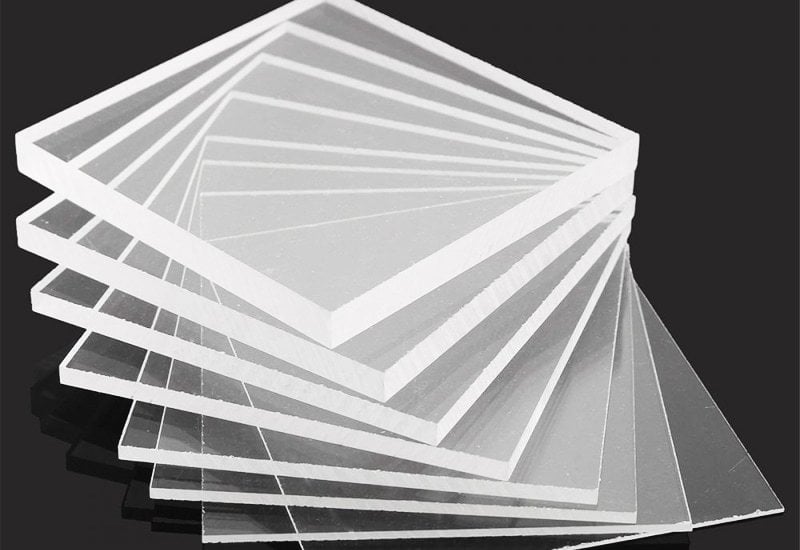
So, which glass should you use?
The Best Champagne Glasses to Buy in 2024
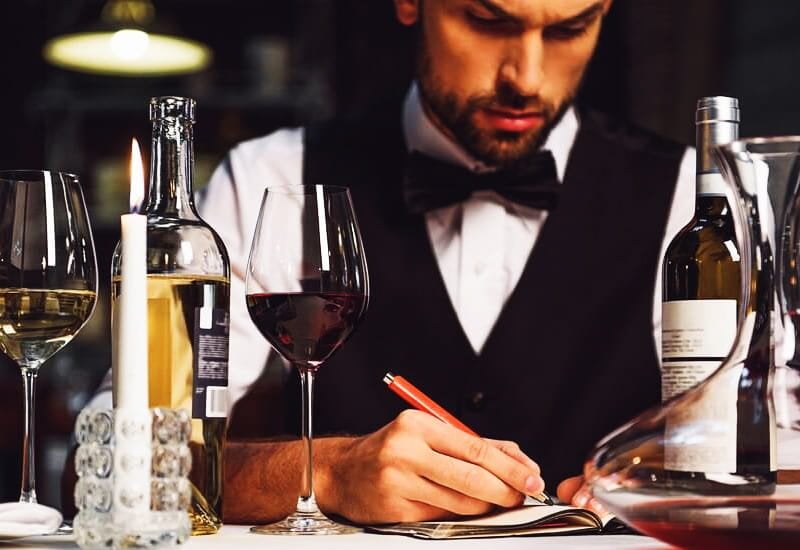
In general, deeper, narrower bowls create a steadier stream of fizz instead of a mass of bubbles that rounder bowls generate.
Let’s look at the main glass styles perfect for you to serve your exotic bubbly wines, or even for gifting! (If you want to gift them, remember that personalized Champagne glasses also make a thoughtful gift for a special occasion!)
1. Tulip glass
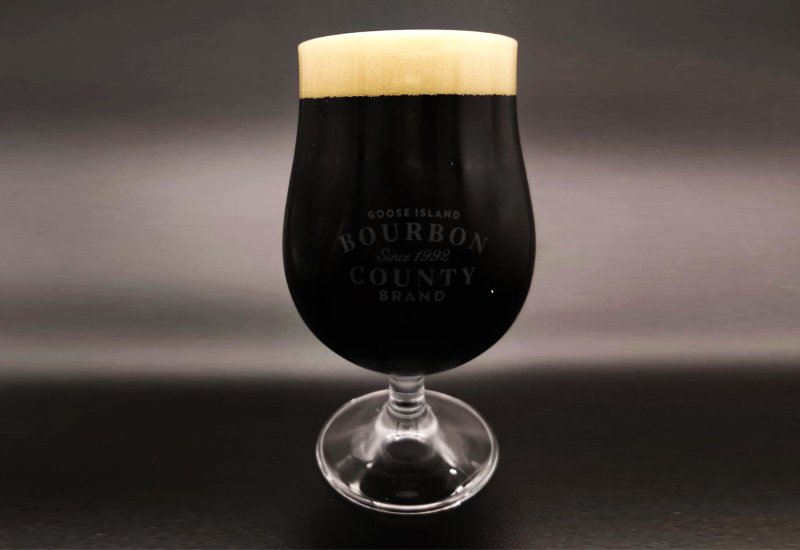
The tulip shape is narrow at the top, flares partly down the bowl, then tapers to a narrow point at the bottom, and retains a good amount of bubbles. It has a wider bowl than the flute, similar to a white wine glass. This allows all of the wine’s aroma to develop and gather in the upper part of the glass.
High-quality Champagne and sparkling wine, like the Dom Perignon or the Lambrusco, should be appreciated from a tulip glass so that you can enjoy all of its flavor and bubble quality.
Look out for these beautiful Champagne tulip glasses:
- Schott Zwiesel Tritan Crystal Glass
- Riedel Veritas Champagne Wine Glass
- Zalto Denk'Art Champagne Glass
2. Champagne flute

Tall and narrow, the flute is an elegant glass that generates highly-attractive, streamlined bubbles that last longer.
But, is a flute really the best glass for drinking Champagne?
Not really!
The Champagne flute is narrower than the tulip glass and doesn’t allow the aromas to develop as much.
Nevertheless, the flute preserves effervescence for longer periods. So it is a practical option for social settings when sparkling wine is poured earlier for handing around.
Also, not all sparkling wines have the subtlety that benefits from the aromatic development in a tulip glass. For example, a cava or prosecco will drink just as well from a Champagne flute. Flutes are also great for cocktails like mimosas.
Personalized Champagne flutes add a special touch for the bride and groom, great for toasting
at a wedding!
Elegant Champagne flutes:
- Schott Zwiesel Tritan Crystal Flute
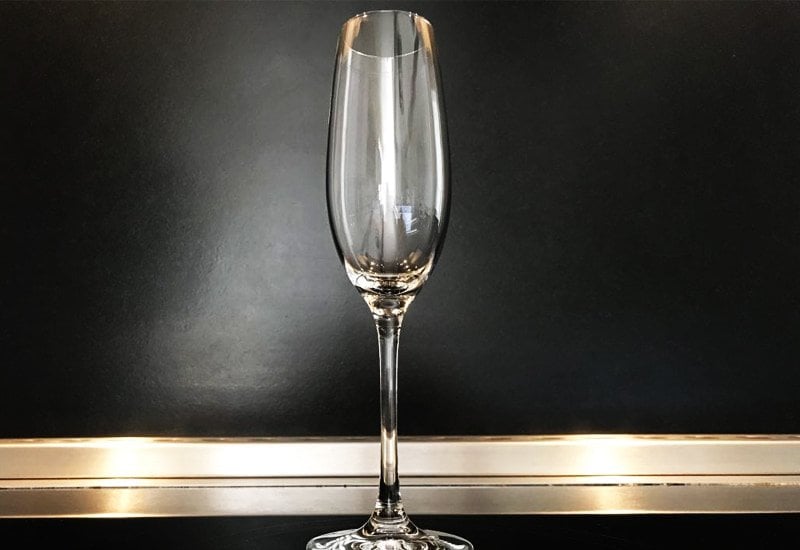
- Waterford “Lismore Pops” Hot Pink T

- Toasting Crystal Champagne Flutes
Don’t miss these stemless flutes too:
- Libbey Stemless Champagne Flute Glasses
- Sempli Monti Champagne Flutes
3. Champagne Coupe
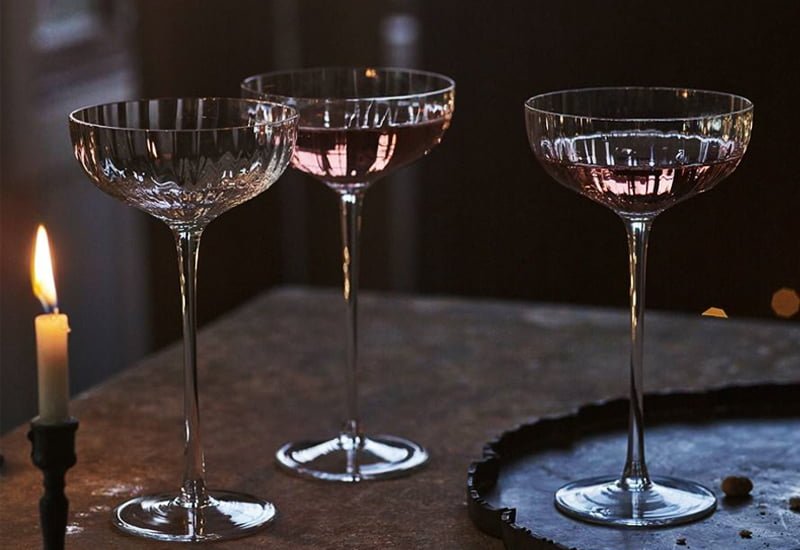
The coupe glass or Champagne saucer is the old fashioned Champagne glass that was popular in the 1920s. However, its popularity has diminished in recent years, as it doesn’t retain bubbles or aromas very well. Bubbles dissipate faster in the coupe bowl as it is wide and low, and the wine goes flat quickly.
However, the coupe still makes a fine cocktail glass, is great for Champagne towers, or if you just want to drink from a vintage glass.
Classic Champagne coupes to buy:
- Ferm Living Ripple Champagne Saucers
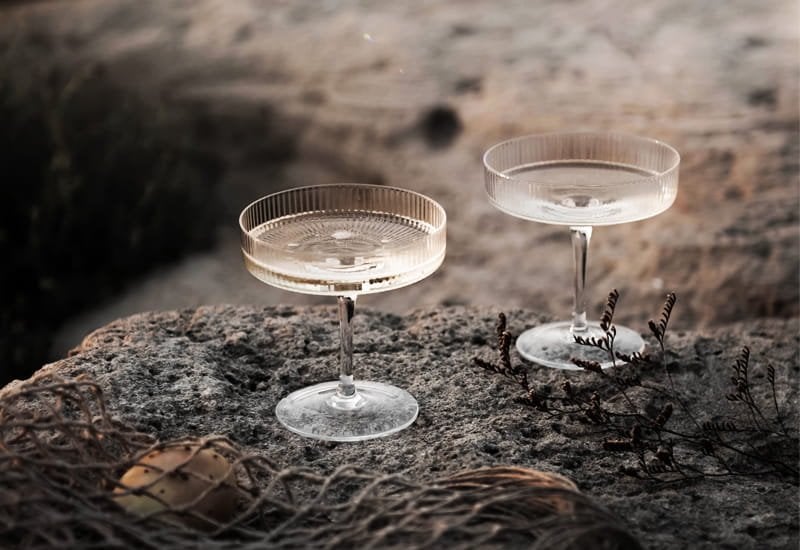
- Riedel Veritas Coupe
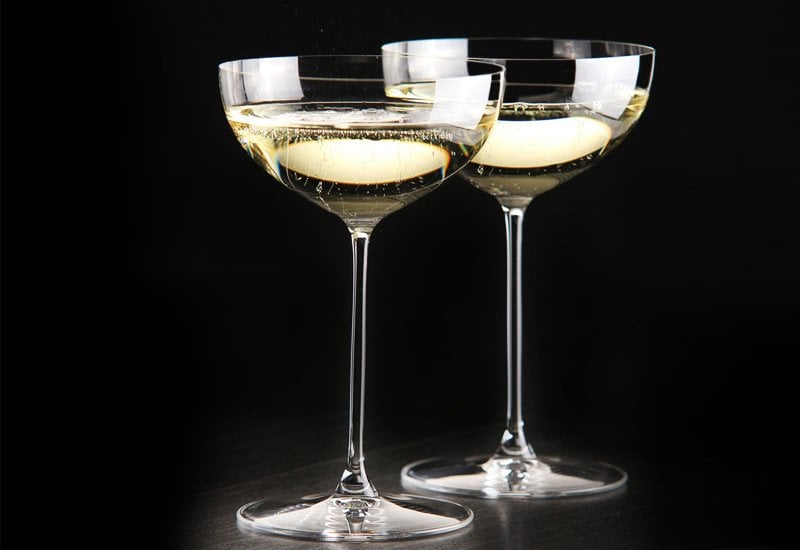
- LSA Wine Collection Champagne Saucers
4. Universal wine glass

Can you drink Champagne in a wine glass?
Yes. A white wine glass would serve as a good substitute for a Champagne glass if you don’t want to spend on too many types of wine glasses. It just won’t have a nucleation site to direct the effervescence, like a Champagne glass.
Universal wine glasses are an option if you prefer the same wine glass for your Champagne, Chardonnay, or Tempranillowines.
Universal wine glasses for your sparkling wine:
- Gabriel-Glas "One for All" StandArt
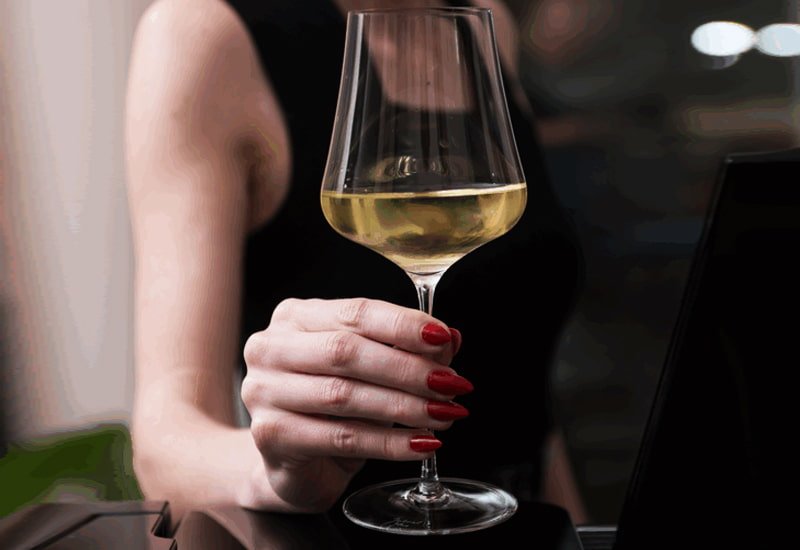
- Schott Zwiesel Tritan Cabernet Glass
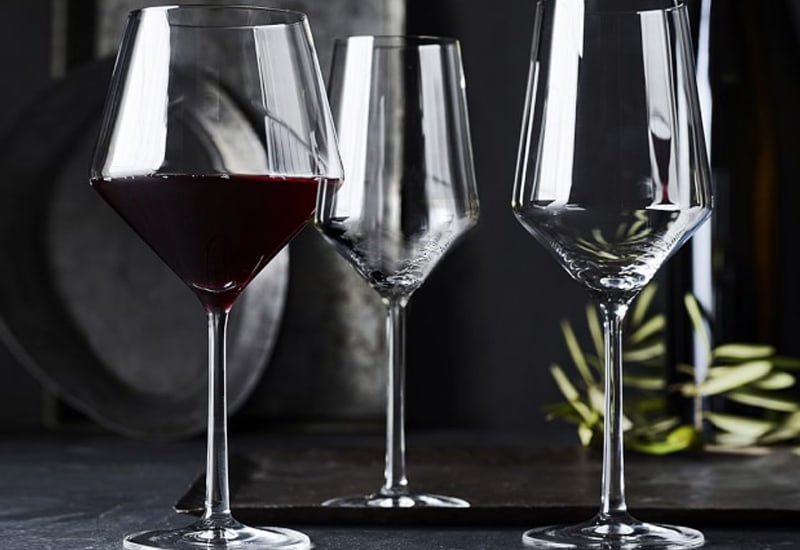
- Zalto Denk’Art Universal Wine Glass
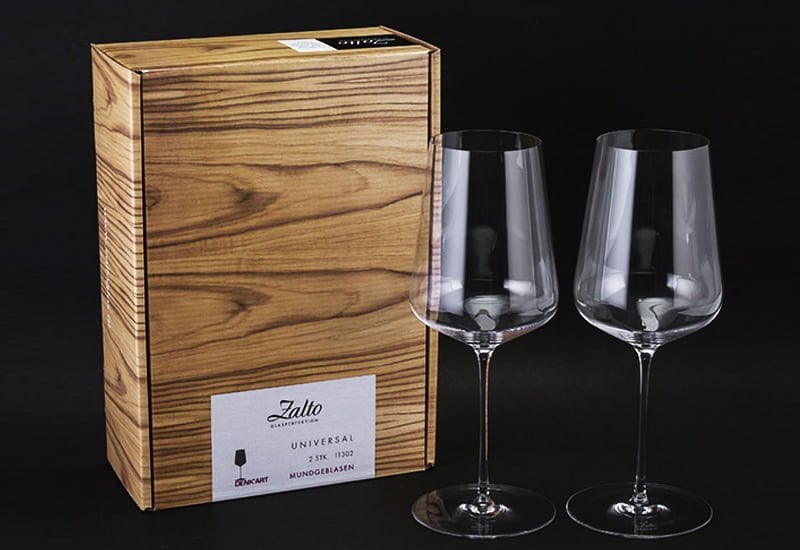
5. Other styles of Champagne glasses
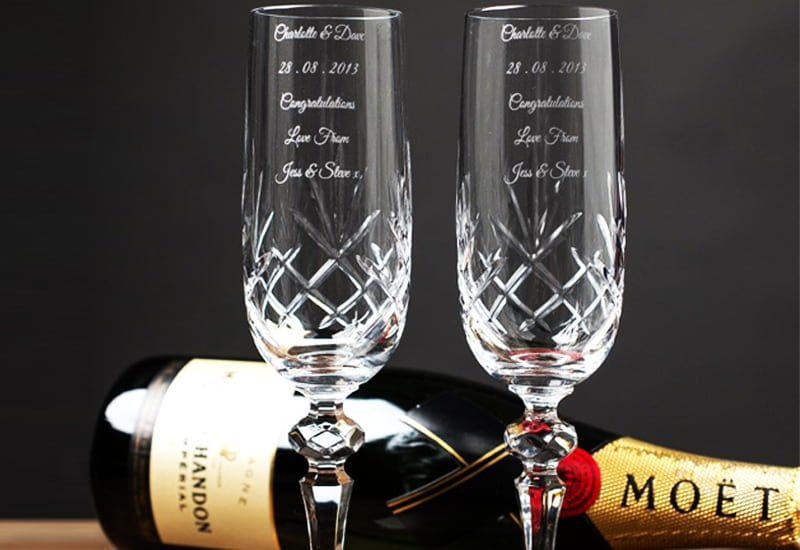
You can use plastic Champagne glasses or disposable plastic flutes that mimic a traditional flute if you’re worried about delicate glassware. Many of these are of good quality and can look just like regular glass.
A stemless glass or tumbler is suitable for outdoor use. Custom Champagne glasses of unusual shapes can make great centerpieces.
Check out these neat wine tumblers:
- BrüMate Uncork'd Wine Glass Tumbler

- Riedel O Wine Tumbler
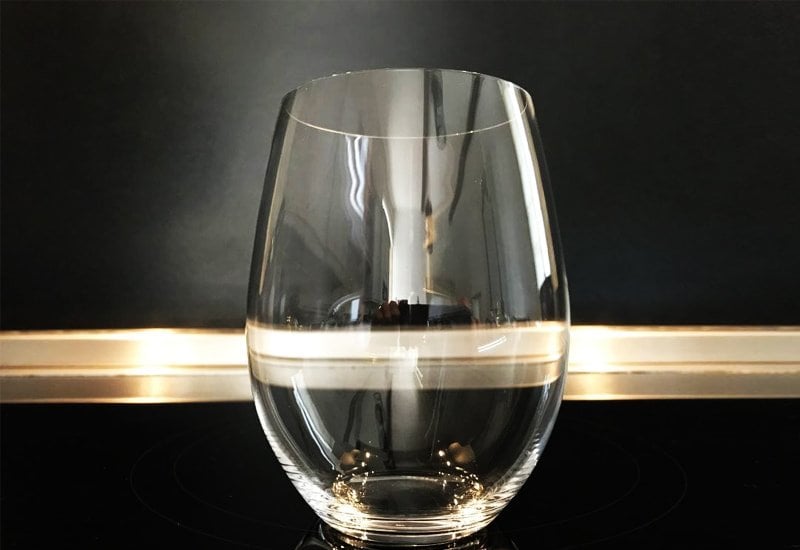
Shatterproof materials for large crowds:
- TOSSWARE™ Unbreakable Stemless Plastic Champagne Flutes
- Acrylic Champagne Glasses by Crate & Barrel
But, which Champagne glass shape is the best?
The tulip glass is the ideal Champagne glass that strikes the right balance in generating bubbles and retaining aroma. The next best options are the flute and coupe, followed by the universal wine glass.
Read more: Apart from Champagne, check out these aromatic Moscato wines to sip in your wine glass.
What to Look for in Champagne Glasses
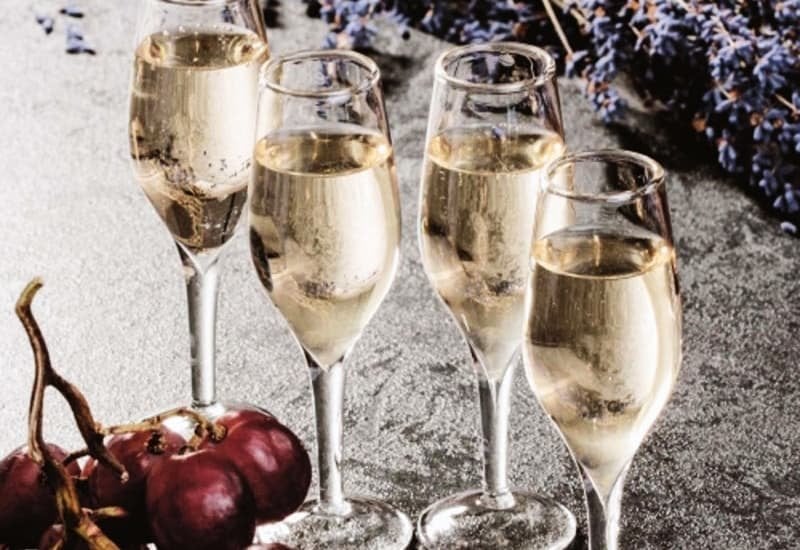
The array of selections in the stemware section of a store can be dazzling. Don’t let that cloud your judgment. Look for these aspects while buying Champagne glasses:
1. Shape and balance
Decide the shape of glass you want, then determine its balance. A very tall flute can be top-heavy once filled with liquid. The base should balance the glass well.
It shouldn’t be too small that it will topple onto the tabletop, and not too large that it’ll get stuck under plates.
2. Size
The Champagne glass should hold at least 5oz of liquid without filling to the top. This is different from a glass meant for dessert wine, for example, which has a smaller capacity.
Champagne glasses are often held and refilled throughout an event, so it should never be heavy as well.
3. Thinness
A thinner glass will not only be lighter but also more pleasant to sip from. This is where crystal wins over every other type of Champagne glass material.
4. Ergonomics
Sipping from a tall, narrow flute can be challenging. You don’t want a glass where the rim hits your nose when you drink.
5. Design & craftsmanship
Clear glasses are an excellent option, allowing an unobstructed display of bubbly aesthetics. Look for a glass that is free of bulges, bubbles, or crookedness.
6. Easy to clean
Is the glassware dishwasher safe?
If not, then you need to consider if you want to hand-wash after each use.
Also, note that some Champagne glass bowls taper to a very fine point where it joins with the stem. This could be difficult to clean.
7. Price
If you enjoy fine sparkling wine often, then investing in a high-quality tulip glass is worth it. If it’s for a large gathering, then there are plenty of affordable glassware options, as we’ve seen above. The point is to know what you’ll be using the glass for.
So, do you hold the Champagne bottle by the neck when pouring?
How to Pour a Glass of Champagne
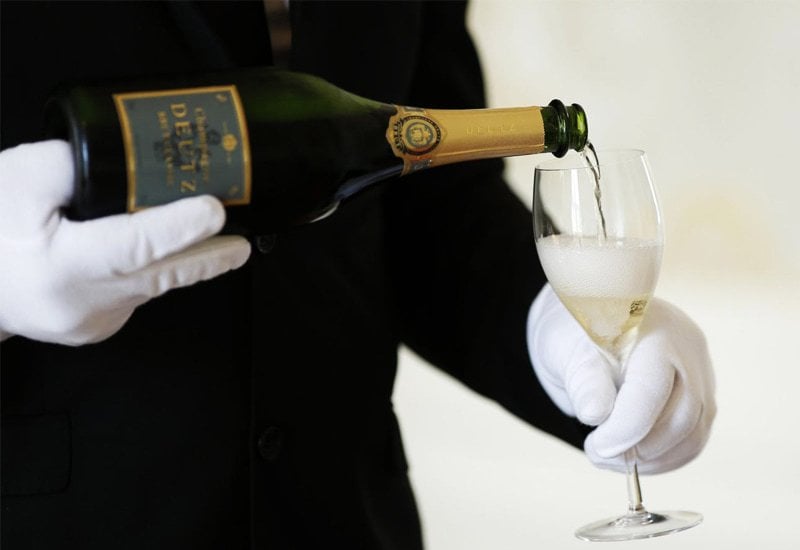
You don’t have to attend a sommeliers course to learn how to pour a glass of sparkling wine. Here are some tips to do it like a pro:
- Hold the Champagne bottle at its base. Place your thumb in the depression there with your fingers supporting its body.
- Tip the Champagne glass to a 45° angle and pour down the side of the glass. Or pour about an inch of wine first, let it settle, then pour again. This reduces loss and prevents over-foaming.
- Don’t fill the glass by more than two-thirds, and don’t let the bottle touch the glass as they’re often stored in dusty cellars.
- Give the bottle a quick twist when you’re done pouring to catch droplets on the lip’s edge.
- Then, allow the wine time to open and the flavors to develop in the glass, then it's ready for drinking.
How Do You Drink Out of a Champagne Glass?
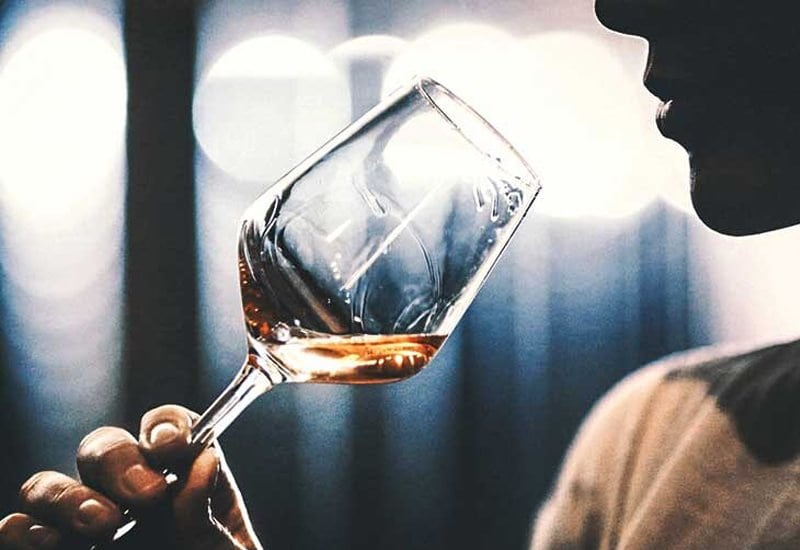
Drinking Champagne can be daunting for some of us, especially from a tall, narrow flute. Here’s how to do it:
Hold the stem of the glass between your thumb and four fingers. Your ring and pinky finger can rest on the base to maintain balance.
- Don’t hold the bowl as that will warm up the sparkling wine, making it less pleasant to drink.
- Tilt your wrist so the glass at about a 45-degree angle. This lets you sip the bubbly without risking spillage.
Not so hard, right?
Also read: A guide to red wine calories to know what’s in your glass.
Maintenance and Care of Champagne Glasses
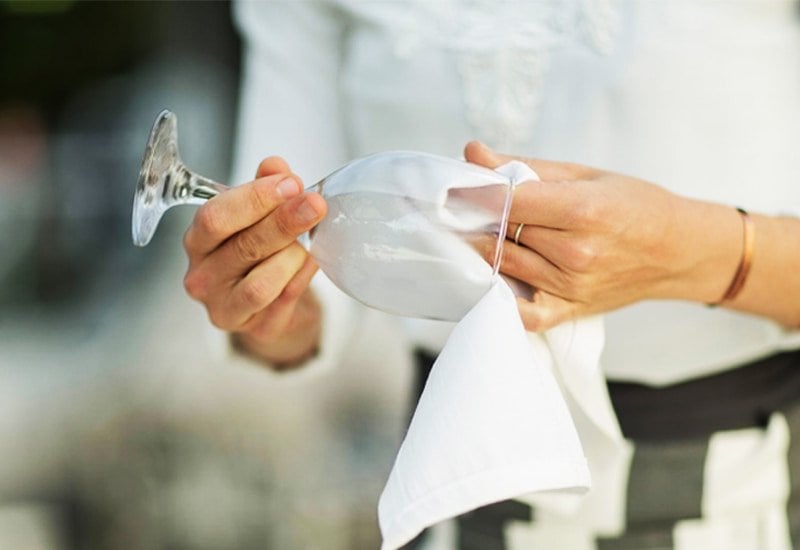
Keeping your Champagne glasses clean is incredibly important. Champagne bubbles appearing from all around the glass indicates dirty stemware!
It’s always better to hand-wash your glasses and let them dry naturally away from heat, as a dishwasher can leave traces of limescale or soap.
Rinse the glasses with hot water before using them and leave them to drain. This removes any detergent residue that can flatten the bubbles. Sometimes a lack of bubbles is not the wine’s fault but an issue with the glass.
Now, how about some of the best Champagne and sparkling wines to fill in these glasses?
The Best Champagne and Sparkling Wines to Fill in Your Special Glass!
Here are some exquisite, delicate sparkling wines to add to your collection.
1. Moët & Chandon Esprit du Siècle Brut, Champagne, France
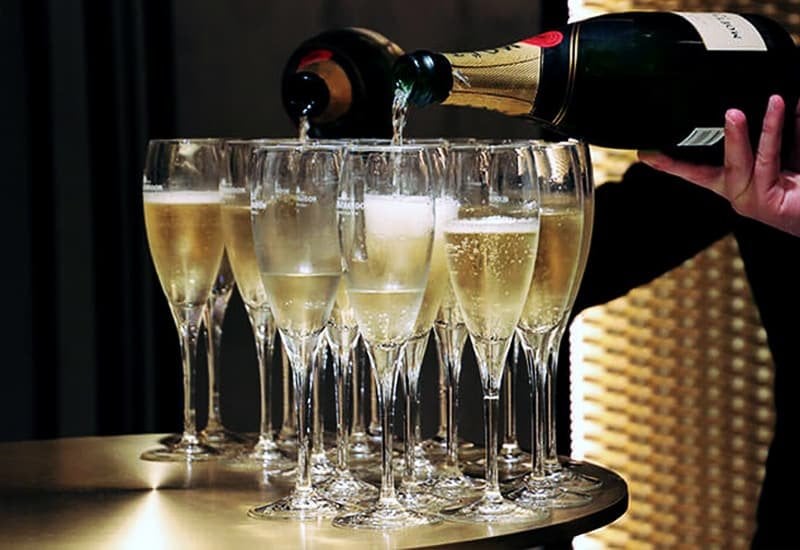
The rare Esprit du Siecle (Spirit of the Century) is a unique blend of 11 of the best Moët & Chandon vintages, from 1900 to 1995.
Price of Moët & Chandon Esprit du Siècle Brut: $6,890+
2. Armand De Brignac Ace of Spades La Collection, Champagne, France

This limited-edition assortment case features six styles of Champagne from Armand de Brignac.
Price of Armand De Brignac Ace of Spades La Collection: $3,680+
3. Krug Clos d'Ambonnay Blanc de Noirs Brut 2002, Champagne, France
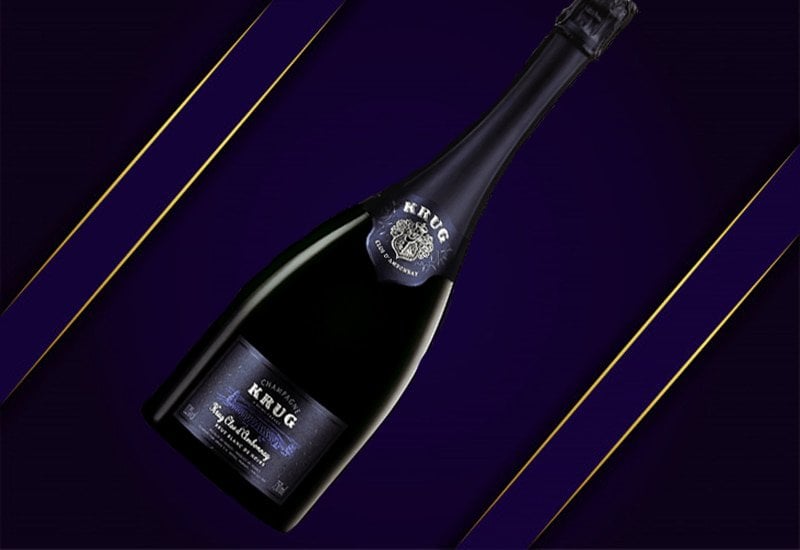
This youthful Krug is intense, concentrated with a deep core of fruit and minerals.
Price of Krug Clos d'Ambonnay Blanc de Noirs Brut 2002: $2,770+
4. Dom Perignon P3 Plenitude Brut Rose 1988, Champagne, France
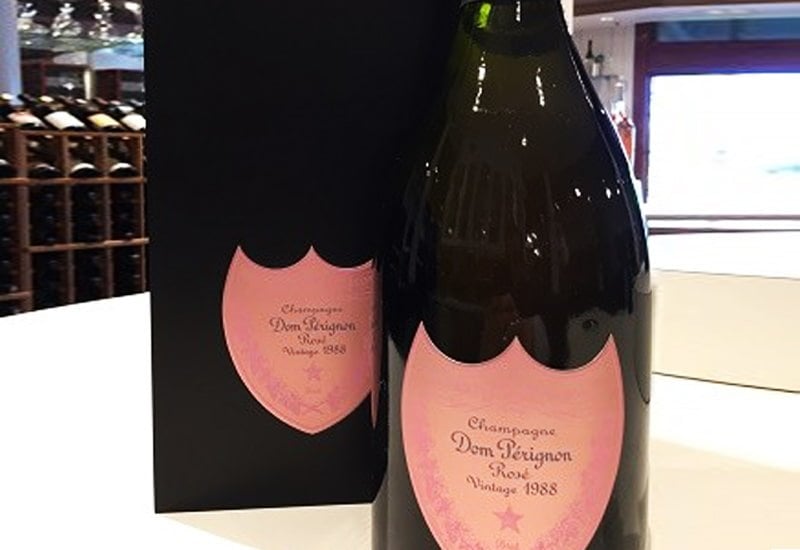
The 1988 Plenitude Brut Rose is fresh and energetic, with notes of powdered sugar, minerals, and red berries.
Price of Dom Perignon P3 Plenitude Brut Rose 1988: $2,420+
5. Louis Roederer Cristal Vinotheque Edition Brut Rose Millesime 1999, Champagne, France
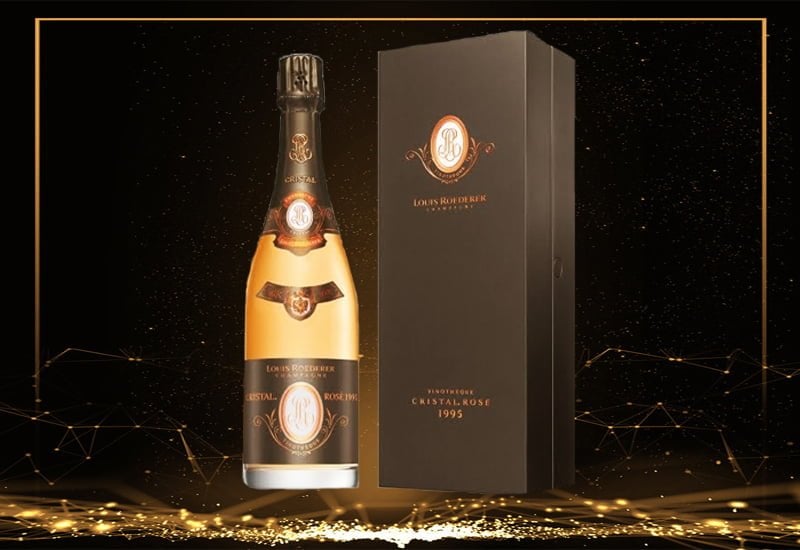
The Vinothèque series are Cristal cuvée that are aged a minimum of 20 years before release.
Price of Louis Roederer Cristal Vinotheque Edition Brut Rose Millesime 1999: $2,100+
6. Dom Perignon Oenotheque Rose 1993, Champagne, France
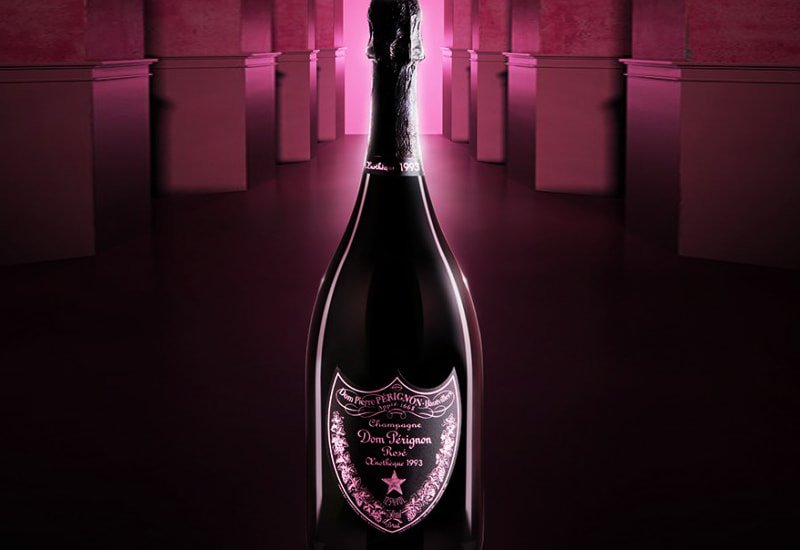
This sparkling Rose blend of Pinot Noir and Chardonnay is well-balanced, featuring red berries and light creaminess on the finish.
Price of Dom Perignon Oenotheque Rose 1993: $1,020+
7. Louis Roederer Cristal Brut Rose Millesime 2008, Champagne, France

The 2008 vintage offers fresh forest berries and citrus with some minerality, to finish with the flavor of brioche and sweet spices.
Price of Louis Roederer Cristal Brut Rose Millesime 2008: $600+
8. Armand de Brignac Ace of Spades Demi-Sec, Champagne, France
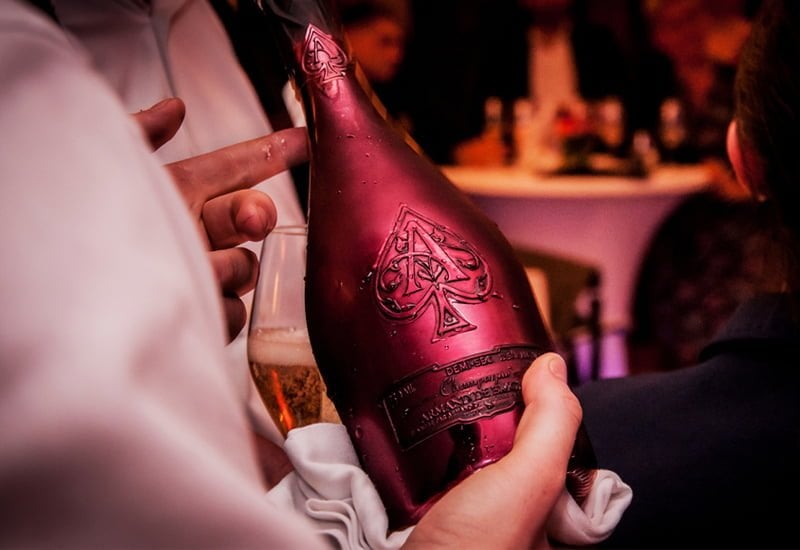
This demi-sec Champagne is beautifully balanced on the palate, with lime-like fruitiness and a rich creaminess.
Price of Armand de Brignac Ace of Spades Demi-Sec: $390+
9. Raventós I Blanc 'Enoteca Personal Manuel Raventós' Espumoso Conca del Riu Anoia 2002, Catalonia, Spain]

This Cava has aromas of ripe white fruit and tropical fruit, with a structured palate that features fruits and nuts.
Price of Raventós I Blanc 'Enoteca Personal Manuel Raventós' Espumoso Conca del Riu Anoia 2002: $310+
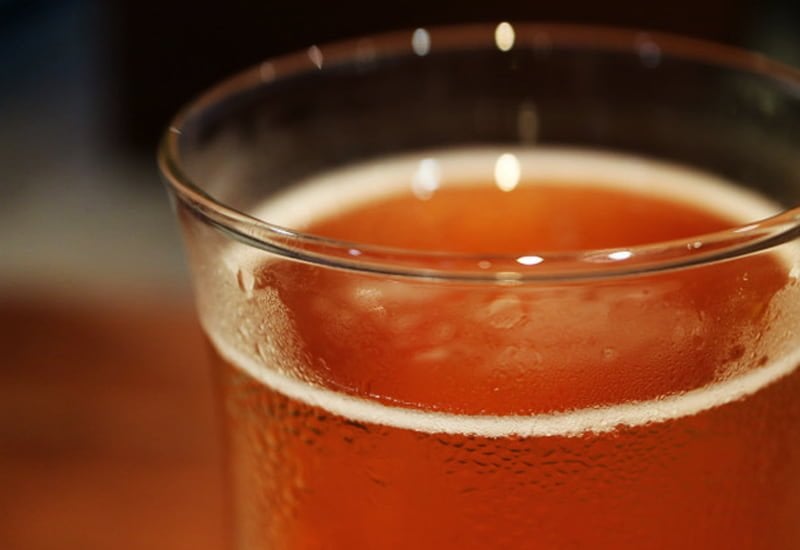
Buy the Finest and Rarest Champagne and Other Wines through Vinovest
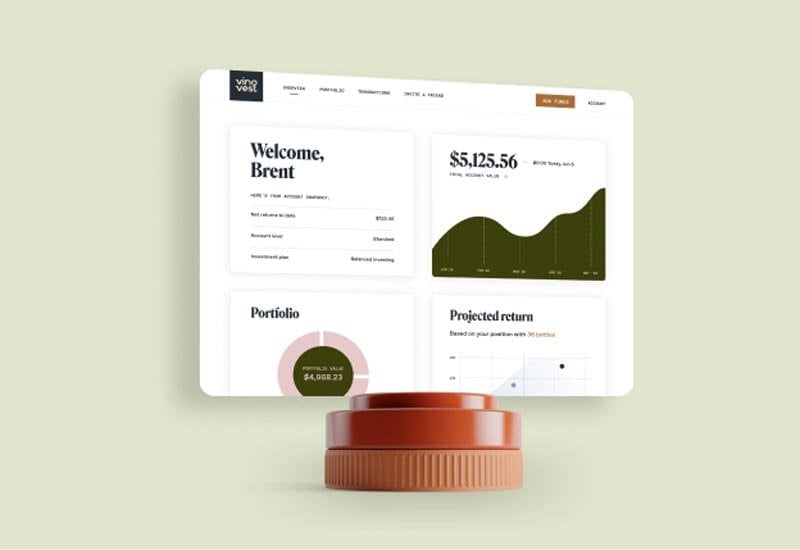
Dressing Bubblies in the Best Champagne Glass
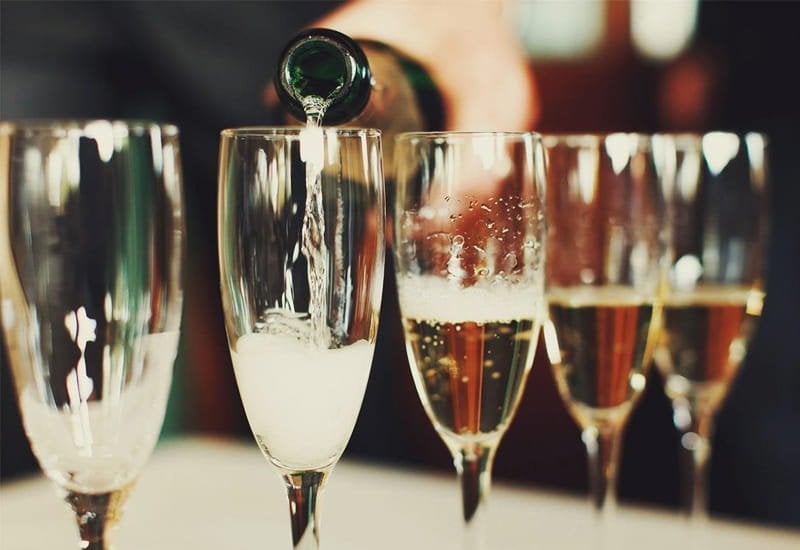
The best Champagne glass is the one that is most suited to your purpose — the tulip for wine appreciation, the flute for a traditional celebration, and the coupe just for old times’ sake!
Also, a gift box of beautiful Champagne glasses makes the perfect present for a wine lover. And, don’t miss adding a fine bottle of Champagne for them to try with the glasses.
Or buy a bottle for yourself, to enjoy in your glasses.
While you decide which Champagne glass to add to your collection, why not let Vinovest help you select and buy your wines? Sign up to start a fine wine collection today!
